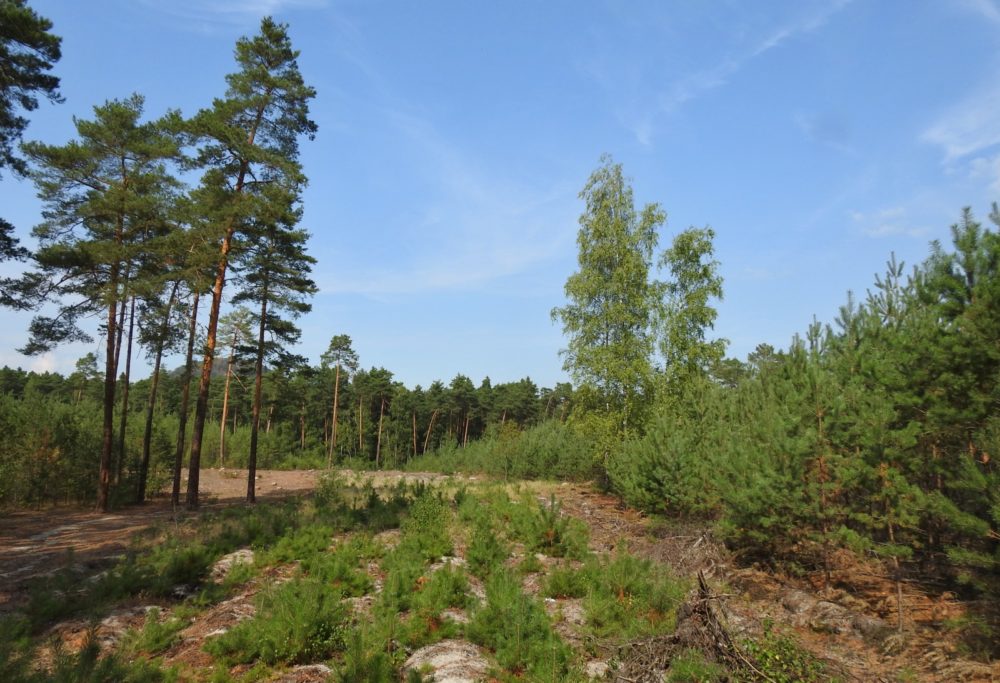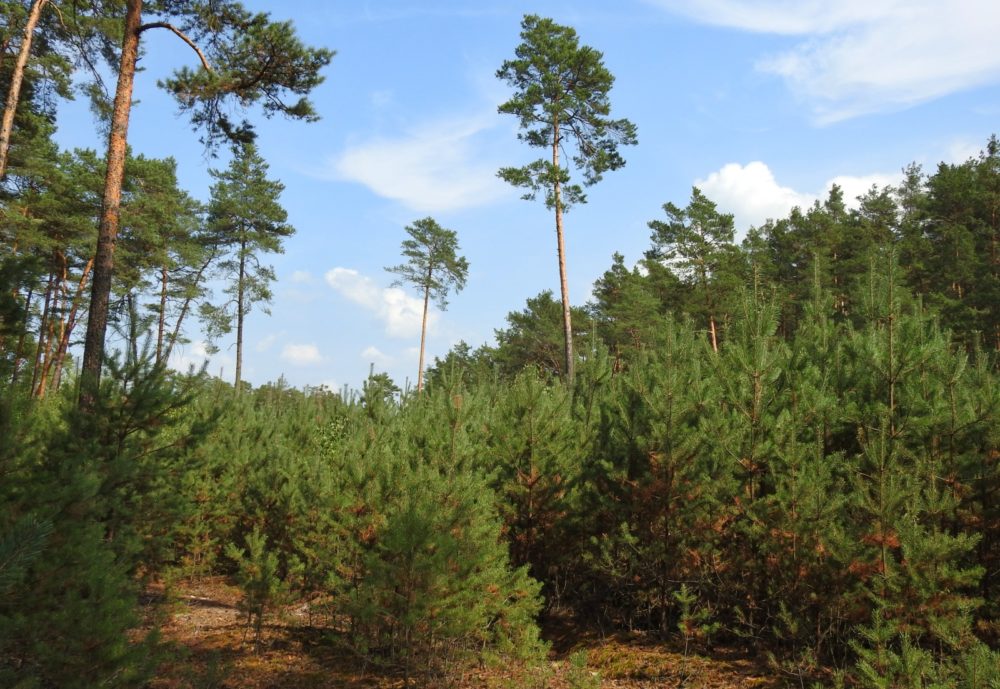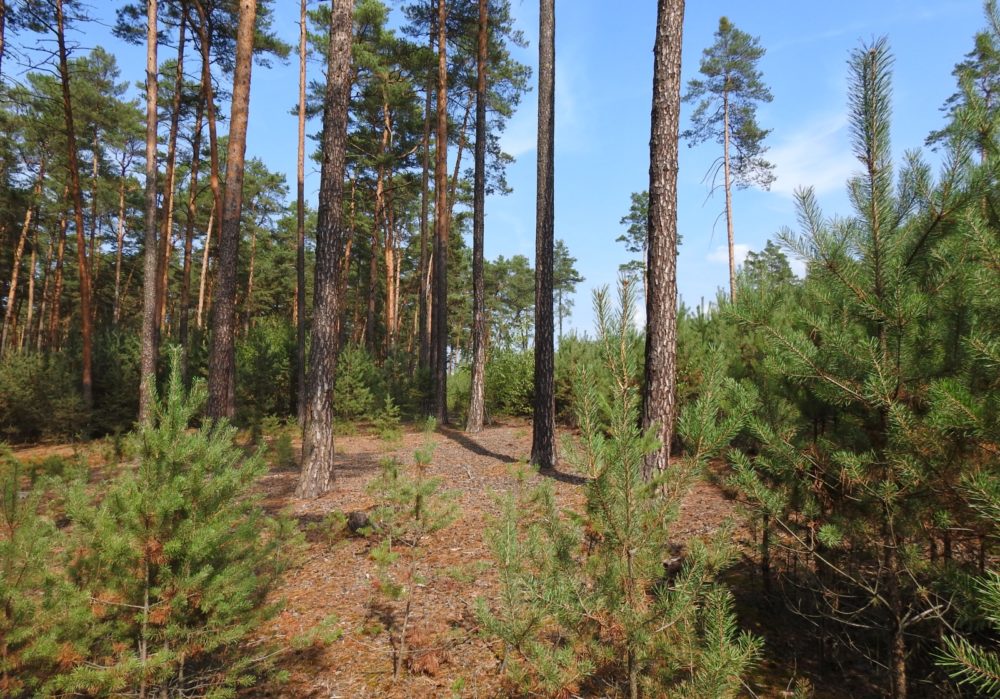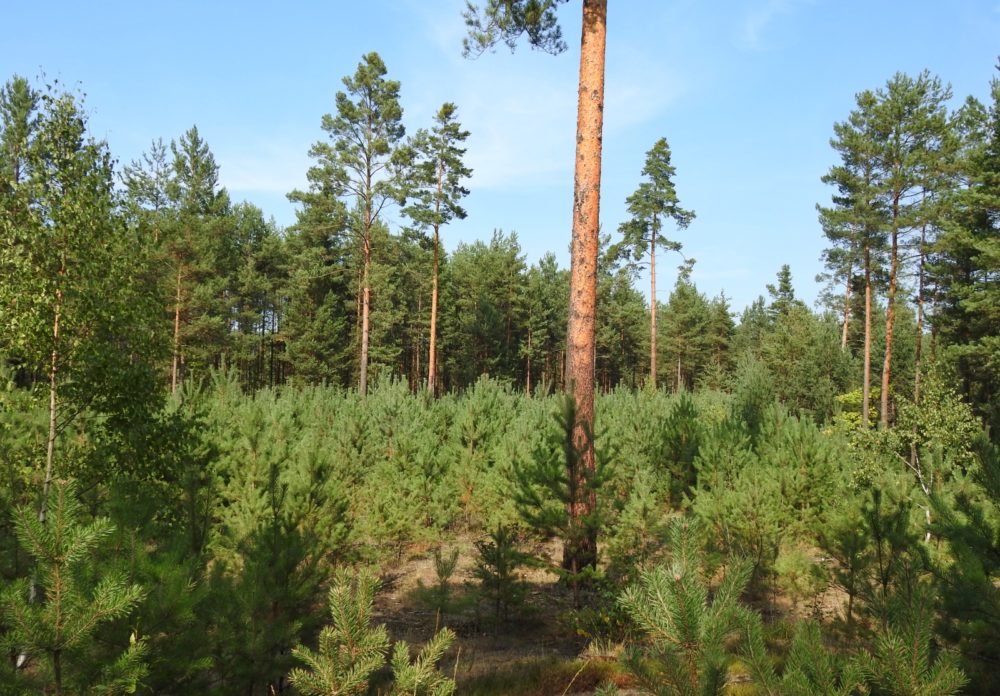Will Scots pine adapt to climate change?
 Scots pine is the second most widespread coniferous tree species in the Czech Republic. In 2020, its share in the composition of forests was 16.1%. From approximately the beginning of the second decade of the 21st century, the deterioration of the health of pine forests can be observed in many areas. This is happening in connection with the development of the climate associated with the uneven distribution of precipitation and the gradual increase in average air temperatures, which increases the frequency of periods of soil drought.
Scots pine is the second most widespread coniferous tree species in the Czech Republic. In 2020, its share in the composition of forests was 16.1%. From approximately the beginning of the second decade of the 21st century, the deterioration of the health of pine forests can be observed in many areas. This is happening in connection with the development of the climate associated with the uneven distribution of precipitation and the gradual increase in average air temperatures, which increases the frequency of periods of soil drought.
The decline of pine stands is so serious that it deserves attention from many points of view. Therefore, scientists from the Opočno Research Station, VÚLHM, v. v. i., published the article Scots pine potential under climate change conditions (Potenciál borovice lesní v podmínkách změny klimatu) in the journal Reports of Forestry Research 1/2023.
The aim of their contribution was to summarize the essential ecophysiological aspects of Scots pine, the development of health status, growth and fertility, as well as the effect of species mixing and management on the health status of this tree species. In this way, they want to provide comprehensive data for the optimization of its application in the conditions of ongoing global climate change, which is mainly characterized by an increase in air temperatures and an uneven
 Scots pine, like most tree species, shows the best growth in habitats with an optimal supply of water and nutrients. However, due to its low tolerance to shading, it is mostly used in extremely dry and waterlogged locations, where it is exposed to minimal competitive pressure from other trees, without a significant loss in growth.
Scots pine, like most tree species, shows the best growth in habitats with an optimal supply of water and nutrients. However, due to its low tolerance to shading, it is mostly used in extremely dry and waterlogged locations, where it is exposed to minimal competitive pressure from other trees, without a significant loss in growth.
Thanks to its pioneering properties and physiological dispositions, Scots pine is a tree species that tolerates adverse habitat conditions. For a long time, Scots pine was considered to be resistant to drought and other adverse climates. However, the conditions of the ongoing period of climate change, associated with the irregular distribution of precipitation and the increase in average temperatures, have shown the limits of the resistance of this tree species.
With its ability to grow on dry sands, dunes, drift sands, gravel, debris, and boulders of a variety of rocks, Scots pine appeared to be drought resistant.
Already at the turn of the millennium, however, the retreat of pine trees from stands and their replacement by downy oak began to manifest itself in dry areas of Switzerland. This showed that pine less tolerates longer dry periods than oak.
Drought stress is higher on permeable stony soils with low water holding capacity. On poor sandy habitats, during the dry season, it is necessary to expect a decrease in seepage and a decrease in the renewal of the groundwater level, while the need for transpiration increases.
 On the other hand, research has shown that pines are less stressed by transient dry periods than, for example, Norway spruce. In pine, in contrast to spruce, larger trees responded more sensitively to drought stress with a decrease in transpiration, while thinner trees showed a smaller difference.
On the other hand, research has shown that pines are less stressed by transient dry periods than, for example, Norway spruce. In pine, in contrast to spruce, larger trees responded more sensitively to drought stress with a decrease in transpiration, while thinner trees showed a smaller difference.
For pine, the amount of precipitation is significantly correlated with the DBH increase. Compared to spruce, however, the loss of DBH growth due to the reduced distribution of precipitation is lower in pine, especially in drying and poor habitats.
The low rainfall of peak summer and early autumn (July to September) was evaluated as crucially important for the deterioration of the pine’s health. Scientists therefore predict the retreat of pines from lower altitudes.
Scots pine is more susceptible to xylem embolism (interruption of the water column in conductive tissues) due to drought than Mediterranean pine species (e.g. Aleppo pine – Pinus halepensis, maritime pine – Pinus pinaster), which after several consecutive extreme dry periods showed its higher defoliation and reduced growth.
As scientists also have found, Scots pine has a higher water consumption in summer, in opposite to Black pine (Pinus nigra).
 The weakening of Scots pine by water stress leads to its reduced defence against pathogens. One of the spreading pests, it is mistletoe, a narrowly specialized subspecies of pine (Viscum album subsp. austriacum).
The weakening of Scots pine by water stress leads to its reduced defence against pathogens. One of the spreading pests, it is mistletoe, a narrowly specialized subspecies of pine (Viscum album subsp. austriacum).
Pine mistletoe parasitizes water and increases drought stress in dry periods. The attack can lead to the death of a branch or part of the crown, which greatly reduces the assimilation apparatus. In the case of a massive occurrence of this semi-parasite, the tree dies.
Mistletoe has a demonstrably negative effect on the resistance of pines to drought and on the regeneration of trees after a period of drought. In the case of trees that were more intensively attacked by mistletoe, the drying of the crowns continued after the end of the dry period.
Mistletoe infestation can act as a predisposing factor for tree drying, as it causes a drop in its foliage, but also as one of its causes due to the increase in water stress during drought.
The researchers concluded that:
- Stress is accelerated by the synergistic action of fungal and insect pathogens, and in many areas by the increase in the occurrence of mistletoe. A bigger risk of deterioration of the health condition is manifested in more nutritious habitats and increases with the age of the stands.
- The mostly moderate, but positive response of pine growth to the formation of mixed stands indicates one of the suitable ways of its further use with regard to the uncertainty of climate development.
- At the same time and for preventive reasons, it will be necessary to focus on early education with stronger interventions, especially in youth, together with a reduction in the planting interval, which will increase the availability of water under the stand.
- Regarding the proven greater physiological resistance of younger stands, a targeted reduction in clearing of commercial forests in endangered habitats would also guarantee higher production safety and the fulfilment of other forest functions.
The article was prepared during the solution of the grant “Differentiation of habitats and management in stands of pine, oak and beech to mitigate the adverse effects of environmental change” („Diferenciace stanovišť a hospodaření v porostech borovice, dubu a buku pro zmírnění nepříznivých dopadů environmentální změny“), supported by the Grant Service of the Forests of the Czech Republic and during the implementation of the project of the National Agency of Agricultural Sciences (NAZV) No. QK22020008 “Comprehensive evaluation of the fulfilment of production and non-production functions of the forest in stands of preparatory woody plants“ („Komplexní vyhodnocení plnění produkčních a mimoprodukčních funkcí lesa u porostů přípravných dřevin“).
The article Scots pine potential under climate change conditions (Potenciál borovice lesní v podmínkách změny klimatu) can be downloaded here.
Authors: Ondřej Špulák, Jakub Černý, VÚLHM, v. v. i., VS Opočno, e-mail: cerny@vulhmop.cz
Prepared by: Ing. Jan Řezáč, VÚLHM, v. v. i., e-mail: rezac@vulhm.cz
Illustrative photos: Examples of close to nature management in pine forests, around Doksy, author Jan Řezáč
